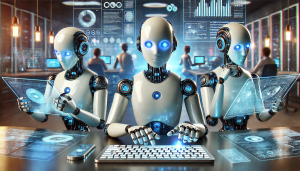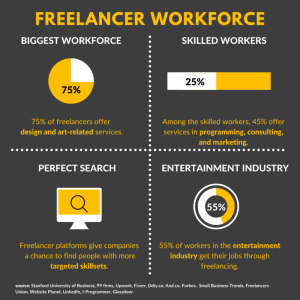Agentic AI and Autonomous Systems

The term “Aghanentic AI” does not appear to be a standard or recognized term within the current lexicon of Artificial Intelligence and Autonomous Systems. It is possible that this term is a misspelling, a neologism yet to gain traction, or a specific project name not widely known. However, considering the context of AI and autonomous operation, it is highly probable that the intended concept is “Agentic AI.” Agentic AI refers to artificial intelligence systems designed with agency – the capacity to act purposefully and autonomously in an environment to achieve set goals. This article will proceed under the assumption that “Agentic AI” is the concept of interest, exploring its profound implications for and synergy with Autonomous Systems. Should “Aghanentic AI” refer to a different, specific concept, the broader discussion on advanced AI enabling autonomy will still provide relevant context.
As of May 2025, the fields of Artificial Intelligence (AI) and Autonomous Systems are experiencing unprecedented growth and convergence, heralding a new era of intelligent action. Agentic AI, with its emphasis on goal-oriented, decision-making entities, stands at the heart of this revolution, empowering machines to operate with increasing levels of independence across a vast spectrum of applications. This comprehensive exploration delves into the core concepts of Agentic AI and autonomous systems, their underlying technologies, diverse applications, inherent challenges, and the transformative future they promise.
Understanding the Core Concepts: AI, Autonomy, and Agency
To appreciate the significance of Agentic AI in autonomous systems, it’s crucial to first define the foundational elements.
1. Artificial Intelligence (AI): The Engine of CognitionArtificial Intelligence is a broad branch of computer science focused on creating systems capable of performing tasks that typically require human intelligence. This includes learning, reasoning, problem-solving, perception, language understanding, and decision-making.
- Evolution of AI: From early symbolic reasoning (Good Old-Fashioned AI – GOFAI) to the current dominance of machine learning and deep learning, AI has evolved significantly. Initial concepts date back to the mid-20th century, with pioneers like Alan Turing posing the question “Can machines think?”.
- Types of AI:
- Artificial Narrow Intelligence (ANI): Also known as Weak AI, ANI is designed and trained for a specific task (e.g., virtual assistants, image recognition software, recommendation engines). This is the current state of most AI applications.
- Artificial General Intelligence (AGI): Also known as Strong AI, AGI refers to AI with the ability to understand, learn, and apply knowledge across a wide range of tasks at a human level of intelligence. AGI remains largely theoretical and a long-term goal.
- Artificial Superintelligence (ASI): ASI is a hypothetical form of AI that would surpass human intelligence and cognitive abilities in virtually all domains.
- Key AI Techniques:
- Machine Learning (ML): Algorithms that allow systems to learn from data without being explicitly programmed. Subsets include supervised learning, unsupervised learning, and semi-supervised learning.
- Deep Learning (DL): A subset of ML using artificial neural networks with multiple layers (deep neural networks) to analyze complex patterns in large datasets. It has driven breakthroughs in areas like computer vision and natural language processing.
- Natural Language Processing (NLP): Enables computers to understand, interpret, and generate human language.
- Computer Vision: Allows machines to interpret and understand visual information from the world, such as images and videos.
- Reinforcement Learning (RL): An AI training technique where an agent learns to make a sequence of decisions by trying to maximize a cumulative reward in a particular environment.
2. Autonomous Systems: The Embodiment of Independent ActionAutonomous systems are machines or software systems capable of operating and performing tasks without direct human intervention, or with minimal human oversight, in complex and often dynamic environments.
- Characteristics:
- Sensing: Perceiving the environment through various sensors (cameras, LiDAR, radar, GPS, etc.).
- Perceiving: Interpreting sensor data to build a model or understanding of the environment.
- Deciding: Making choices and planning actions based on perceived information and predefined goals.
- Acting: Executing the planned actions through actuators or software commands.
- Learning/Adapting (often): Improving performance over time based on experience.
- Levels of Autonomy: Autonomy is not a binary state but rather a spectrum. Various scales define these levels, with a common one being the SAE International J3016 standard for driving automation, ranging from Level 0 (no automation) to Level 5 (full automation). Similar concepts apply to other domains.
- Relationship with AI: AI, particularly machine learning and reinforcement learning, provides the “brains” for autonomous systems, enabling them to perceive, reason, decide, and learn. While not all autonomous systems necessarily use sophisticated AI (e.g., a simple thermostat), advanced autonomy heavily relies on AI capabilities.
3. Agentic AI: The Intelligent Agent Driving AutonomyAgentic AI focuses on creating “agents” – computational entities that perceive their environment through sensors and act upon that environment through actuators to achieve specific goals. These agents are characterized by:
- Autonomy: Operating without direct human control, making their own decisions.
- Reactivity: Responding in a timely fashion to changes in the environment.
- Proactiveness: Taking initiative to pursue goals rather than solely reacting to stimuli.
- Social Ability (in multi-agent systems): Interacting with other agents (and potentially humans) to achieve common or individual goals.
- Learning/Adaptation: Improving their performance over time through experience, often using reinforcement learning or other machine learning techniques.
Agentic AI is the crucial ingredient that elevates an automated system to an autonomous one, imbuing it with the intelligence to handle novelty, complexity, and uncertainty. It’s about building systems that don’t just follow pre-programmed instructions but can strategize, adapt, and make reasoned choices in dynamic settings.
Key Technologies and Architectures Powering Agentic Autonomous Systems
The development of sophisticated autonomous systems hinges on the integration of various cutting-edge technologies and robust architectures:
- Sensor Fusion: Combining data from multiple sensors (e.g., cameras, LiDAR, radar, IMUs, GPS) to create a more accurate, reliable, and comprehensive understanding of the environment than any single sensor could provide. Algorithms for sensor fusion are critical for robust perception.
- Path Planning and Navigation Algorithms: These algorithms enable autonomous systems to find optimal or feasible routes from a starting point to a destination while avoiding obstacles and adhering to constraints. Examples include A*, D*, Rapidly-exploring Random Trees (RRTs), and probabilistic roadmaps (PRMs).
- Decision-Making Frameworks: Agentic AI relies on frameworks that allow for reasoned decision-making under uncertainty.
- Behavior Trees: A hierarchical way to organize and switch between different tasks or behaviors.
- State Machines: Model systems with a finite number of states and transitions between them.
- Partially Observable Markov Decision Processes (POMDPs): A mathematical framework for decision-making in situations where the agent has incomplete information about its state and the environment.
- Goal-Oriented Action Planning (GOAP): AI systems determine a sequence of actions to achieve a desired goal state.
- Learning Architectures for Autonomy:
- Reinforcement Learning (RL): Particularly deep reinforcement learning (DRL), is pivotal for training agents to master complex tasks in dynamic environments by learning through trial and error and reward signals (e.g., AlphaGo, autonomous driving policies).
- Imitation Learning (Learning from Demonstration): Training agents by showing them examples of desired behavior, often provided by a human expert.
- Self-Supervised Learning: Enables systems to learn from unlabeled data by creating supervisory signals from the data itself, crucial for reducing reliance on massive labeled datasets.
- Simulation and Digital Twins: Virtual environments that replicate real-world scenarios are indispensable for training, testing, and validating autonomous systems safely and cost-effectively before deployment. Digital twins – dynamic virtual representations of physical assets or systems – allow for continuous monitoring, analysis, and optimization.
- Edge Computing and Cloud Computing:
- Edge Computing: Processing data closer to where it is generated (e.g., on the autonomous vehicle itself) to reduce latency and ensure real-time decision-making, which is critical for many autonomous applications.
- Cloud Computing: Provides scalable resources for computationally intensive tasks like training complex AI models, storing vast amounts of data, and enabling over-the-air updates for autonomous systems. A hybrid approach is often optimal.
- Explainable AI (XAI): As autonomous systems make critical decisions, it’s increasingly important to understand why they make those decisions. XAI techniques aim to make AI models more transparent and interpretable, which is vital for debugging, trust, and accountability.
Diverse Applications of Agentic AI and Autonomous Systems
The fusion of Agentic AI with robotics and software systems is unlocking a myriad of applications across numerous sectors:
- Transportation:
- Autonomous Vehicles (AVs): Self-driving cars, trucks, and buses promise to revolutionize personal mobility, logistics, and public transport by improving safety, efficiency, and accessibility. Companies like Waymo, Cruise, Tesla, and numerous automotive giants are heavily invested in this area.
- Autonomous Drones (UAVs): Used for delivery, surveillance, inspection (e.g., infrastructure, agriculture), mapping, and search and rescue operations.
- Autonomous Ships and Submersibles: For cargo transport, underwater exploration, and maritime surveillance, operating with reduced crew or entirely unmanned.
- Manufacturing (Industry 4.0):
- Smart Factories: Autonomous robots (cobots working alongside humans, and fully autonomous mobile robots – AMRs) perform tasks like assembly, welding, material handling, and quality inspection with high precision and endurance.
- Predictive Maintenance: AI agents analyze sensor data from machinery to predict failures before they occur, scheduling maintenance proactively to minimize downtime.
- Healthcare:
- Robotic Surgery: AI-assisted robotic systems enhance surgeons’ precision and enable minimally invasive procedures.
- AI-Powered Diagnostics: Agentic systems analyze medical images (X-rays, CT scans, MRIs) to detect diseases like cancer with high accuracy.
- Personalized Medicine: AI algorithms analyze patient data to tailor treatment plans.
- Autonomous Patient Monitoring: Systems that track vital signs and alert medical staff to critical changes.
- Drug Discovery and Development: AI agents can accelerate the process of identifying and testing new drug candidates.
- Defense and Security:
- Autonomous Surveillance and Reconnaissance: UAVs, UGVs (Unmanned Ground Vehicles), and AUVs (Autonomous Underwater Vehicles) gather intelligence in hostile or inaccessible environments.
- Cybersecurity: AI agents detect and respond to cyber threats in real-time, identify vulnerabilities, and predict potential attack vectors.
- Autonomous Weapon Systems (AWS): A highly controversial area, involving weapons that can independently search for, identify, and engage targets. This raises significant ethical and legal concerns.
- Space Exploration:
- Autonomous Rovers and Landers: Mars rovers like Perseverance and Curiosity navigate challenging terrains, collect samples, and conduct scientific experiments with a high degree of autonomy due to communication delays with Earth.
- Autonomous Spacecraft: For deep space missions, navigation, and system management.
- Agriculture (Precision Farming):
- Autonomous Tractors and Harvesters: Optimize planting, fertilizing, and harvesting based on real-time data.
- Drones for Crop Monitoring: Identify areas needing water, pesticides, or fertilizers, and detect diseases.
- Smart Cities:
- Intelligent Traffic Management: AI systems optimize traffic flow, reduce congestion, and manage public transportation.
- Autonomous Waste Management: Smart bins and autonomous collection vehicles.
- Energy Grid Optimization: AI agents manage energy distribution and consumption efficiently.
- Public Safety: Autonomous surveillance and emergency response systems.
- Customer Service and Business Operations:
- Advanced Chatbots and Virtual Assistants: Agentic AI powers conversational interfaces that can understand complex queries, perform tasks, and provide personalized support.
- Algorithmic Trading: AI agents make high-frequency trading decisions in financial markets.
- Personalized Recommendation Systems: In e-commerce, entertainment, and content platforms.
Navigating the Labyrinth: Challenges and Limitations
Despite the immense potential, the widespread adoption of Agentic AI and autonomous systems faces significant hurdles:
1. Technical Hurdles:
- Robustness and Reliability: Ensuring systems operate safely and reliably in all conditions, especially in complex, unpredictable, and “long-tail” (rare) scenarios, remains a primary challenge. The “unknown unknowns” can lead to failures.
- Explainability and Interpretability (XAI): Many advanced AI models, particularly deep learning networks, operate as “black boxes.” Understanding their decision-making processes is crucial for trust, debugging, certification, and accountability, especially when failures occur.
- Dealing with Edge Cases and Novel Situations: Autonomous systems trained on specific datasets may fail when encountering situations significantly different from their training data. Achieving true generalization is difficult.
- Cybersecurity Vulnerabilities: Autonomous systems, being heavily reliant on software and connectivity, are susceptible to cyberattacks. Malicious actors could take control of systems or corrupt their data, leading to catastrophic consequences. Adversarial attacks, where inputs are subtly manipulated to fool AI models, are a particular concern.
- Data Dependency and Quality: AI models, especially deep learning, require vast amounts of high-quality, diverse, and well-labeled data for training. Acquiring and managing such data can be expensive and challenging. Biases in data can lead to biased and unfair system behavior.
- Sensor Limitations: Sensors can be affected by adverse weather conditions (rain, fog, snow), lighting changes, or physical obstructions, impacting the system’s perception.
- Computational Cost: Training and running sophisticated AI models can be computationally intensive, requiring specialized hardware and significant energy consumption.
2. Ethical and Societal Concerns:
- Job Displacement: Automation driven by autonomous systems could lead to significant job losses in sectors like transportation, manufacturing, and customer service, requiring societal adaptation and reskilling initiatives.
- Bias and Fairness: AI algorithms can inherit and even amplify biases present in their training data, leading to discriminatory outcomes in areas like hiring, loan applications, or criminal justice. Ensuring fairness and equity is a critical ethical imperative.
- Accountability and Responsibility: Determining who is responsible when an autonomous system causes harm or makes an error (the programmer, the manufacturer, the owner, or the system itself) is a complex legal and ethical challenge (the “responsibility gap”).
- Privacy Concerns: Autonomous systems often collect vast amounts of data about individuals and their environment, raising significant privacy concerns regarding data storage, usage, and potential misuse.
- The “Black Box” Problem: Linked to XAI, the inability to fully understand how some AI systems arrive at decisions can erode public trust and make it difficult to ensure they align with human values.
- Safety and Security Risks: Beyond individual system failures, concerns exist about the potential for misuse of powerful autonomous technologies, such as in autonomous weapons systems or large-scale surveillance. The risk of unintended emergent behavior in complex multi-agent systems is also a consideration.
- Human Over-Reliance and Skill Degradation: As people become increasingly dependent on autonomous systems, there’s a risk of losing critical skills and the ability to intervene effectively when systems fail.
3. Regulatory and Legal Frameworks:
- Need for Updated Laws and Standards: Existing legal frameworks are often inadequate for addressing the unique challenges posed by autonomous systems. New regulations are needed for testing, deployment, certification, liability, and data governance.
- Certification and Validation: Establishing robust processes for certifying the safety and reliability of autonomous systems, especially safety-critical ones, is essential.
- International Cooperation: Given the global nature of AI development and deployment, international collaboration on standards and regulations is crucial to foster innovation while mitigating risks.
The Horizon: The Future of Agentic AI and Autonomous Systems
The trajectory of Agentic AI and autonomous systems points towards an increasingly intelligent, interconnected, and capable future. Several key trends are shaping this evolution:
- Towards More Sophisticated Autonomy and Generalization: Research is focused on creating AI agents that can operate effectively in a wider range of environments, adapt more readily to new situations, and exhibit more robust common-sense reasoning. This includes advancements in areas like continual learning, transfer learning, and meta-learning.
- Human-AI Collaboration (Centaur Systems): Rather than full replacement, the future will likely see more systems designed for seamless collaboration between humans and AI agents. “Human-in-the-loop” systems allow AI to handle most tasks while humans intervene for complex decisions or exceptions. Cobots (collaborative robots) in manufacturing are an early example.
- Swarm Intelligence and Multi-Agent Systems (MAS): The development of coordinated groups of autonomous agents (swarms) that can work together to achieve common goals, inspired by natural systems like ant colonies or flocks of birds. MAS can offer greater resilience, scalability, and efficiency for tasks like large-scale environmental monitoring, search and rescue, or distributed logistics.
- Advances in AI Research:
- Causal AI: Moving beyond correlation to understand cause-and-effect relationships, enabling more robust and explainable AI.
- Neuro-Symbolic AI: Combining the strengths of deep learning (pattern recognition) with symbolic reasoning (logic and knowledge representation) to create more powerful and interpretable AI.
- Progress towards AGI: While still a distant goal, continued research into foundational AI principles could lead to breakthroughs that significantly enhance the capabilities of autonomous agents.
- The Role of Quantum Computing: Quantum computing, though still in its nascent stages, holds the potential to revolutionize AI by solving complex optimization problems, accelerating machine learning algorithms, and simulating complex systems far beyond the capabilities of classical computers. This could significantly impact the development of highly intelligent autonomous systems.
- Enhanced Embodiment and Interaction: Future autonomous systems will likely feature more sophisticated physical forms and more natural and intuitive ways of interacting with humans and the physical world. This includes advances in soft robotics, haptics, and natural language interaction.
- Ethical AI by Design: A growing emphasis on integrating ethical considerations, fairness, transparency, and accountability directly into the design and development lifecycle of AI and autonomous systems, rather than as an afterthought.
Conclusion: Charting a Course for a Responsibly Autonomous Future
Agentic AI is the driving force propelling autonomous systems from simple automated tools to intelligent entities capable of perceiving, reasoning, and acting independently in our world. The synergy between advanced AI and the engineering of autonomous machines is already reshaping industries, promising transformative benefits in efficiency, safety, convenience, and discovery. From self-driving cars navigating bustling city streets to AI surgeons assisting in delicate operations, and from intelligent robots managing factory floors to autonomous probes exploring distant planets, the impact is profound and far-reaching.
However, this journey into an increasingly autonomous future is not without its significant challenges. Technical hurdles related to robustness, explainability, and security must be overcome. Profound ethical dilemmas concerning bias, job displacement, accountability, and privacy demand careful consideration and proactive solutions. Robust regulatory frameworks are essential to guide innovation responsibly, ensuring that these powerful technologies are developed and deployed in a manner that aligns with societal values and safeguards human well-being.
The path forward requires a multi-faceted approach: continued investment in research and development, fostering interdisciplinary collaboration, promoting public discourse, and establishing adaptive governance mechanisms. By embracing a mindset of responsible innovation, we can harness the immense potential of Agentic AI and autonomous systems to create a future that is not only more efficient and technologically advanced but also more equitable, safe, and ultimately, more human-centric. The dawn of intelligent action is upon us, and it is our collective responsibility to navigate its complexities with wisdom and foresight.
The Dawn of Intelligent Action: Exploring Agentic AI and the Evolution of Autonomous Systems
The term “Aghanentic AI” is not commonly recognized in scientific literature or industry discourse as of May 2025. It is possible this is a novel concept, a niche terminology, or a potential misspelling of a more established term like “Agentic AI.” Given the context of “Autonomous Systems,” this article will proceed by focusing on “Agentic AI,” a rapidly advancing field that is pivotal to the development and understanding of sophisticated autonomous capabilities. Agentic AI, which emphasizes proactive, goal-oriented, and adaptive artificial intelligence, aligns closely with the principles and aspirations of creating truly autonomous systems.
The relentless march of technological progress has brought us to the cusp of a new era, one increasingly shaped and managed by intelligent, autonomous entities. From self-driving cars navigating bustling city streets to sophisticated algorithms managing complex financial trades, and from robotic assistants in advanced manufacturing to AI-powered diagnostics in healthcare, the presence of autonomous systems is becoming ever more pervasive. At the heart of this revolution lies the evolution of Artificial Intelligence (AI), particularly the rise of Agentic AI, which endows machines with the capacity to not just process information, but to act purposefully and independently within their environments.
This article delves into the intricate world of Agentic AI and its symbiotic relationship with Autonomous Systems. We will explore the foundational concepts, the enabling technologies, the vast spectrum of applications, the inherent challenges, and the transformative future that these intelligent systems promise.
Understanding the Core Concepts: AI, Autonomy, and the Agentic Leap
To appreciate the significance of Agentic AI in autonomous systems, it’s crucial to understand the foundational pillars upon which it is built.
1. Artificial Intelligence (AI): The Engine of Modern Autonomy
Artificial Intelligence, at its core, is a branch of computer science dedicated to creating systems capable of performing tasks that typically require human intelligence. This includes abilities like learning, reasoning, problem-solving, perception, understanding language, and decision-making.
- Brief History and Evolution: AI’s journey began in the mid-20th century, marked by periods of fervent optimism (“AI summers”) and funding droughts (“AI winters”). Early AI focused on symbolic reasoning and rule-based systems. The resurgence of neural networks (now often termed Deep Learning) in the 21st century, fueled by vast datasets and powerful computing, has led to breakthroughs in areas like image recognition, natural language processing, and complex pattern detection.
- Types of AI:
- Artificial Narrow Intelligence (ANI): Also known as Weak AI, ANI is designed and trained for a specific task. All current AI applications, from virtual assistants like Siri and Alexa to recommendation engines and image recognition software, fall under this category.
- Artificial General Intelligence (AGI): Often referred to as Strong AI, AGI represents AI with the ability to understand, learn, and apply knowledge across a wide range of tasks at a human-like level of intelligence. AGI remains largely theoretical as of 2025.
- Artificial Superintelligence (ASI): ASI is a hypothetical form of AI that would surpass human intelligence and cognitive abilities across virtually all domains.
- Key AI Techniques Fueling Autonomy:
- Machine Learning (ML): Algorithms that allow systems to learn from data without being explicitly programmed. Subfields include supervised learning, unsupervised learning, and reinforcement learning.
- Deep Learning (DL): A subset of ML that uses artificial neural networks with multiple layers (deep neural networks) to model complex patterns in large datasets.
- Natural Language Processing (NLP): Enables computers to understand, interpret, and generate human language.
- Computer Vision: Allows machines to interpret and understand visual information from the world, such as images and videos.
- Reinforcement Learning (RL): An area of ML where an agent learns to make a sequence of decisions by trying to maximize a cumulative reward. This is particularly crucial for autonomous decision-making in dynamic environments.
2. Autonomous Systems: Beyond Automation
Autonomous systems are not merely automated; they possess a higher degree of independence and decision-making capability. They can operate and adapt to changing circumstances without direct human control, often in complex and unpredictable environments.
- Definition and Characteristics: An autonomous system typically integrates sensors, actuators, and AI-driven control systems. Key characteristics include:
- Sensing: Gathering information about its environment using various sensors (cameras, LiDAR, radar, GPS, etc.).
- Perceiving: Interpreting sensor data to build a model or understanding of its current state and surroundings.
- Planning/Deciding: Using its understanding and goals to determine a course of action.
- Acting: Executing the chosen actions through actuators (motors, control surfaces, etc.).
- Learning/Adapting: Improving performance over time based on experience and new information.
- Levels of Autonomy: Autonomy is not an all-or-nothing concept. Various scales define the degree of human independence. For instance, in autonomous driving, the Society of Automotive Engineers (SAE) defines six levels, from Level 0 (no automation) to Level 5 (full automation, where the vehicle can handle all driving tasks under all conditions without human intervention). Similar classifications exist for other types of autonomous systems.
- Relationship with AI: AI, especially machine learning and reinforcement learning, provides the “brain” for autonomous systems, enabling them to perceive, reason, decide, and learn. Without AI, systems would be limited to pre-programmed automation, lacking the flexibility and adaptability to be truly autonomous. As one source highlights, physical autonomous systems bring AI from the digital realm into the physical world to perform complex tasks in unstructured environments (Source 2.1).
3. Agentic AI: The Proactive, Goal-Driven Intelligence
Agentic AI represents a significant step forward, moving from AI systems that passively respond to inputs to those that can proactively pursue goals with a degree of independence (Source 4.1). An “agent” in AI is an entity that perceives its environment through sensors and acts upon that environment through actuators to achieve its objectives.
- Core Principles of Agentic AI:
- Autonomy: Agentic systems can operate without direct, constant human intervention. They have control over their internal state and their actions.
- Goal-Directed Behavior: Agents are designed with specific objectives or goals. Their actions are purposeful and aimed at achieving these goals.
- Perception and Environmental Interaction: They can sense and interpret their environment, building an understanding of the context in which they operate.
- Decision-Making and Planning: Agentic AI involves sophisticated reasoning and planning capabilities to choose optimal actions among various alternatives, often in complex and uncertain situations. This can involve weighing options, anticipating outcomes, and responding effectively to unforeseen challenges (Source 4.2).
- Learning and Adaptation: Agentic systems can learn from experience, adapt to new information or changing conditions, and improve their performance over time.
- Proactiveness: They can take initiative rather than solely reacting to external stimuli. This proactivity allows for more dynamic and efficient human-machine interaction, where AI can anticipate needs (Source 4.1).
- Agentic AI vs. AI Agents: While the terms are often used interchangeably, “AI agent” can be a broader term for any AI system that perceives, decides, and acts. “Agentic AI” often emphasizes a higher level of autonomy, reasoning, and the ability to handle complex, multi-step tasks, sometimes involving the coordination of multiple specialized AI agents (Source 4.1, 4.2). These systems can analyze problems, develop strategies, and act on them based on preset goals (Source 4.2).
Agentic AI is what breathes life into the concept of an autonomous system, enabling it to function not just as a tool, but as an independent actor striving to achieve its designated ends.
Key Technologies and Architectures Enabling Agentic Autonomous Systems
The development of capable Agentic AI and autonomous systems relies on a confluence of advanced technologies and sophisticated architectures:
- Sensor Fusion: Autonomous systems often employ a diverse suite of sensors (e.g., cameras, LiDAR, radar, IMUs, GPS). Sensor fusion is the process of combining data from these multiple sensors to produce a more accurate, reliable, and comprehensive understanding of the environment than could be achieved with any single sensor. This is crucial for robust perception, especially in challenging conditions.
- Perception Systems: Advanced algorithms, often based on deep learning (e.g., Convolutional Neural Networks for image processing), are used to interpret sensor data. This includes object detection, recognition, tracking, scene understanding, and localization (determining the system’s position and orientation).
- Planning and Navigation Algorithms: Once an autonomous system understands its environment, it needs to plan its actions. This involves:
- Path Planning: Finding an optimal and safe route from a starting point to a goal, avoiding obstacles. Algorithms like A*, D*, and Rapidly-exploring Random Trees (RRTs) are common.
- Motion Planning: Determining the precise sequence of movements or control inputs to follow the planned path.
- Behavioral Planning: Making higher-level decisions about how to behave in complex situations (e.g., how a self-driving car should navigate an intersection or merge into traffic).
- Decision-Making Frameworks:
- Rule-Based Systems: While traditional, they can still be part of hybrid systems for predictable scenarios.
- Behavior Trees: A popular framework for defining complex sequences of actions and conditions in a modular and reactive way.
- State Machines: Representing different operational states and the transitions between them.
- Probabilistic Models (e.g., Partially Observable Markov Decision Processes – POMDPs): Useful for decision-making under uncertainty, where the system doesn’t have complete information about its environment.
- Large Language Models (LLMs) in Agents: A newer trend involves leveraging LLMs as reasoning engines within agentic architectures. LLMs can help agents understand complex instructions, break down tasks into manageable steps, and even generate plans or code for execution (Source 4.2).
- Learning Architectures for Autonomy:
- Reinforcement Learning (RL): Agents learn optimal policies through trial and error, receiving rewards or penalties for their actions. Deep Reinforcement Learning (DRL) combines RL with deep neural networks to handle complex, high-dimensional state and action spaces.
- Imitation Learning (Learning from Demonstration): Agents learn by observing and mimicking human experts.
- Transfer Learning: Applying knowledge learned in one task or environment to improve learning in a new, related task or environment.
- Multi-Agent Systems (MAS): Many complex autonomous tasks benefit from the collaboration of multiple intelligent agents. Agentic AI often involves orchestrating these diverse agents, where each agent might have specialized capabilities but they work together to achieve a common, overarching goal (Source 4.1, 4.2). This coordination allows for tackling problems beyond the scope of a single agent.
- Simulation and Digital Twins: Creating realistic virtual environments (simulations) and digital replicas of physical systems (digital twins) is crucial for developing, testing, and validating autonomous systems safely and cost-effectively before real-world deployment. High-fidelity simulations allow for testing in a vast range of scenarios, including rare and dangerous edge cases.
- Edge Computing and Cloud Computing: Autonomous systems generate and process vast amounts of data.
- Edge Computing: Processing data locally on the autonomous system itself (or nearby) is essential for low-latency decision-making, especially in time-critical applications like autonomous driving.
- Cloud Computing: Provides resources for training complex AI models, storing large datasets, performing large-scale simulations, and enabling over-the-air updates and fleet management.
- Cybersecurity for Autonomous Systems: As systems become more autonomous and connected, they also become more vulnerable to cyber threats. Robust cybersecurity measures are essential to protect against malicious attacks that could compromise safety, privacy, or functionality.
These technologies are not isolated components but are deeply interconnected, forming the complex fabric of modern agentic autonomous systems.
Applications: The Expanding Reach of Agentic AI and Autonomous Systems
The impact of agentic AI and autonomous systems is already being felt across a multitude of industries, and its reach is rapidly expanding.
- Transportation: This is perhaps the most visible domain.
- Autonomous Vehicles (AVs): Self-driving cars, trucks, buses, and delivery robots promise to revolutionize personal mobility, logistics, and public transport by improving safety, efficiency, and accessibility (Source 2.1). Agentic AI is key for navigation, decision-making in complex traffic, and handling unforeseen events (Source 5.1).
- Unmanned Aerial Vehicles (UAVs/Drones): Used for surveillance, delivery, agriculture, infrastructure inspection, and disaster response.
- Autonomous Ships and Submersibles: Enhancing maritime logistics, ocean exploration, and research.
- Manufacturing and Industry 4.0:
- Smart Factories: Autonomous robots performing assembly, welding, painting, and material handling with greater precision and endurance.
- Predictive Maintenance: Agentic AI systems monitor equipment performance, predict potential failures, and schedule maintenance proactively, reducing downtime and costs (Source 5.3).
- Supply Chain Optimization: Autonomous systems manage inventory, optimize logistics, and improve overall supply chain efficiency (Source 5.1).
- Healthcare:
- Robotic Surgery: AI-assisted robots enabling surgeons to perform complex procedures with greater precision and minimally invasive techniques.
- AI-Powered Diagnostics: Analyzing medical images (X-rays, MRIs, CT scans) to detect diseases like cancer with high accuracy, often assisting human radiologists (Source 6.3).
- Personalized Medicine and Treatment: Agentic systems can analyze patient data to recommend personalized treatment plans or adjust medication (Source 5.3).
- Autonomous Patient Monitoring: Wearable devices and AI monitoring patients with chronic conditions and alerting healthcare providers to potential issues (Source 5.3).
- Drug Discovery and Development: AI agents can accelerate the identification of potential drug candidates and optimize clinical trial design (Source 5.3).
- Defense and Security:
- Autonomous Surveillance and Reconnaissance: Drones and ground robots equipped with AI for monitoring borders, critical infrastructure, and hostile environments.
- Cybersecurity: Agentic AI systems can autonomously detect and respond to cyber threats in real-time, identify anomalies, and even conduct offensive security testing (Source 5.1, 5.2).
- Unmanned Combat Systems: The development of autonomous weapons raises significant ethical debates but is an active area of research and development in some nations.
- Space Exploration:
- Autonomous Rovers and Probes: Exploring distant planets and celestial bodies, making decisions and conducting experiments with minimal human guidance due to communication delays (e.g., Mars rovers).
- Agriculture (Precision Farming):
- Autonomous Tractors and Harvesters: Performing tasks like planting, plowing, and harvesting.
- Drones for Crop Monitoring: Analyzing crop health, identifying pest infestations, and optimizing irrigation and fertilization.
- Robotic Fruit Picking and Weeding: Addressing labor shortages and improving efficiency.
- Smart Cities:
- Intelligent Traffic Management: Optimizing traffic flow, reducing congestion, and improving public transportation.
- Autonomous Waste Management: Robot dog porters collecting trash (Source 2.1).
- Energy Grid Optimization: AI managing energy distribution and consumption more efficiently.
- Public Safety: AI-driven surveillance and emergency response systems.
- Finance:
- Algorithmic Trading: Agentic AI systems analyzing market trends and executing trades in real-time (Source 5.1).
- Fraud Detection and Prevention: AI continuously monitoring transactions to identify and flag suspicious activities, adapting to new fraud patterns (Source 4.3).
- Personalized Financial Advice and Management: AI-powered robo-advisors offering tailored investment strategies.
- Customer Service and Retail:
- Advanced Chatbots and Virtual Assistants: Agentic AI enabling more natural, context-aware, and helpful interactions, capable of handling complex queries and performing tasks (Source 4.1, 5.1). They can go beyond scripted interactions to offer solutions and update records independently (Source 5.3).
- Personalized Shopping Experiences: AI analyzing customer behavior to provide tailored recommendations and offers.
- Inventory Management: Agentic AI forecasting demand and automating reordering processes (Source 5.3).
- Human Resources:
- Automated Candidate Screening: AI agents can screen resumes, identify top candidates, and schedule interviews (Source 5.2).
- Employee Support: AI providing answers to HR-related questions and assisting with onboarding (Source 5.2).
The breadth of these applications underscores the transformative potential of agentic AI integrated within autonomous systems. These systems are not just automating tasks but are increasingly taking on roles that require complex decision-making and adaptation.
Challenges and Limitations: Navigating the Hurdles
Despite the immense promise, the widespread and responsible deployment of agentic AI and autonomous systems faces significant challenges:
1. Technical Hurdles:
- Robustness and Reliability: Ensuring systems operate safely and reliably in all conditions, especially in complex, dynamic, and unpredictable real-world environments, remains a major challenge. Handling “edge cases” or novel situations not encountered during training is particularly difficult.
- Explainability and Interpretability (XAI): Many advanced AI models, particularly deep learning systems, operate as “black boxes,” making it difficult to understand their decision-making processes (Source 8.1). This lack of transparency is problematic in critical applications where understanding the ‘why’ behind a decision is crucial for trust, debugging, and accountability.
- Verification and Validation: Rigorously testing and certifying the safety and correctness of autonomous systems, especially those that learn and adapt, is extremely complex.
- Sensor Limitations: Sensors can be affected by adverse weather conditions (rain, fog, snow), lighting variations, or occlusions, impacting the system’s perception.
- Cybersecurity Vulnerabilities: Autonomous systems can be targets for cyberattacks. Malicious actors could potentially take control of a system, steal sensitive data, or cause it to behave dangerously (Source 9.1, 9.2). Ensuring data security and privacy is paramount.
- Data Dependency and Quality: AI models, especially deep learning models, require vast amounts of high-quality training data. Biased or incomplete data can lead to poor performance and unfair outcomes (Source 6.2, 8.1).
- Scalability and Cost: Developing and deploying sophisticated autonomous systems can be expensive, and scaling them for widespread use requires significant investment in infrastructure and technology (Source 6.3, 9.1).
- Computational Demands: Real-time processing of sensor data and complex AI algorithms requires substantial computational power, often with constraints on energy consumption, particularly for edge devices.
2. Ethical and Societal Concerns:
- Job Displacement: Automation driven by AI and robotics could lead to significant job losses in certain sectors, requiring societal strategies for workforce transition, reskilling, and upskilling (Source 2.1, 6.3).
- Bias and Fairness: AI systems can inherit and even amplify biases present in their training data or design, leading to discriminatory outcomes in areas like hiring, loan applications, criminal justice, and healthcare (Source 8.1).
- Accountability and Responsibility: Determining who is responsible when an autonomous system makes an error or causes harm is a complex legal and ethical question. Is it the developer, the manufacturer, the owner, the operator, or the AI itself? (Source 6.1, 8.1). This is especially critical for autonomous vehicles or medical robots.
- Privacy Concerns: Autonomous systems, particularly those with advanced sensors and connectivity, collect vast amounts of data, raising concerns about individual privacy and data misuse (Source 6.3, 9.1).
- Safety and Security Risks: Beyond technical failures, there are concerns about the misuse of autonomous technology, such as in autonomous weapons systems (“killer robots”) or for malicious surveillance.
- Human Oversight and Control: Defining the appropriate level of human control over autonomous systems is crucial. While the goal is often full autonomy, there may be situations where human intervention or oversight is necessary, and systems must be designed to facilitate this effectively (the “human-in-the-loop” or “human-on-the-loop” concepts).
- Erosion of Human Skills: Over-reliance on autonomous systems could lead to a decline in human skills and capabilities in certain domains.
- Lack of Emotional Intelligence: Agentic AI, despite its intelligence, currently lacks genuine emotional understanding and empathy, which can be crucial in human-centric applications (Source 6.3).
- Public Perception and Trust: Gaining public trust in autonomous systems is vital for their widespread adoption. High-profile accidents or ethical missteps can significantly erode this trust (Source 9.1).
3. Regulatory and Legal Frameworks:
- Outdated Laws: Existing laws and regulations often struggle to keep pace with the rapid advancements in AI and autonomous systems. New frameworks are needed to address issues of liability, safety standards, data governance, and ethical guidelines.
- Certification and Standardization: Developing robust processes for certifying the safety and reliability of autonomous systems, and establishing industry-wide standards, is essential.
- International Cooperation: Given the global nature of AI development and deployment, international collaboration on regulatory approaches and ethical norms is increasingly important.
Addressing these multifaceted challenges requires a concerted effort from researchers, developers, policymakers, ethicists, and the public to ensure that agentic AI and autonomous systems are developed and deployed in a manner that is safe, fair, transparent, and beneficial to society.
The Future of Agentic AI and Autonomous Systems: A Glimpse Ahead
The trajectory of agentic AI and autonomous systems points towards an even more integrated and intelligent future. Several key trends and potential developments are shaping this horizon:
- Increasing Levels of Autonomy and Sophistication: We can expect systems to become capable of handling even more complex tasks in increasingly unstructured and dynamic environments with less human intervention. Agentic AI will feature enhanced reasoning, learning, and adaptation capabilities (Source 7.2). Deloitte predicts that by 2027, 50% of companies currently using GenAI will have agentic AI pilots or proofs of concept (Source 7.1).
- Enhanced Human-AI Collaboration: Rather than fully replacing humans, many future autonomous systems will work collaboratively with people. This includes “cobots” (collaborative robots) in manufacturing, AI assistants augmenting human professionals, and systems where humans provide high-level guidance or intervene in critical situations. The focus will be on creating symbiotic relationships where AI handles an increasing number of daily work decisions autonomously (Gartner predicts 15% by 2028, Source 7.1).
- Swarm Intelligence and Advanced Multi-Agent Systems: The ability of multiple autonomous agents to coordinate and collaborate effectively will lead to powerful new applications, such as drone swarms for search and rescue or environmental monitoring, and distributed robotic systems for complex logistics or construction tasks.
- Explainable AI (XAI) becoming Mainstream: As the demand for transparency and trustworthiness grows, significant advancements in XAI techniques are expected, allowing for better understanding and debugging of AI decisions.
- Edge AI Proliferation: More AI processing will occur directly on devices (edge computing), enabling faster response times, improved privacy, and reduced reliance on constant cloud connectivity for autonomous systems.
- Self-Learning and Continual Adaptation: Systems will become better at learning continuously from their experiences in the real world, adapting to new situations and improving their performance over their operational lifetime with minimal human retraining.
- Advancements Towards AGI (Speculative but Influential): While true AGI is still a long-term prospect, research in this direction will continue to push the boundaries of AI capabilities, influencing the development of more versatile and generally capable agentic systems.
- The Role of Quantum Computing: In the longer term, quantum computing could offer breakthroughs in solving complex optimization problems and training more powerful AI models, potentially accelerating the development of highly advanced autonomous systems.
- Ethical AI by Design: There will be a growing emphasis on embedding ethical considerations, fairness, and safety directly into the design and development lifecycle of AI systems. AI governance initiatives will become crucial to prevent misuse (Source 7.1).
- Personalized Autonomous Experiences: From highly customized healthcare interventions delivered by AI to personalized learning companions and bespoke entertainment, autonomous systems will increasingly tailor their behavior to individual user needs and preferences.
- Industry-Specific Agentic Platforms: We will likely see the rise of specialized agentic AI platforms tailored for specific industries, such as finance, healthcare, or manufacturing, offering pre-built modules and tools to accelerate the development of autonomous solutions.
The future of agentic AI is not just about smarter machines; it’s about redefining human-machine communication and interaction, creating a “virtual workforce” that can augment human capabilities and tackle complex challenges in novel ways (Source 7.1).
Conclusion: Charting a Responsible Path for an Autonomous Future
Agentic AI is undeniably the driving force behind the next generation of autonomous systems, unlocking unprecedented capabilities across nearly every sector of human endeavor. These systems, capable of perceiving, reasoning, acting, and learning with increasing degrees of independence, hold the potential to revolutionize industries, enhance human well-being, and help us address some of the world’s most pressing challenges. From making transportation safer and more efficient to personalizing healthcare and optimizing our use of resources, the benefits are vast and compelling.
However, the journey towards this autonomous future is not without its obstacles. Technical complexities, significant ethical dilemmas concerning bias, accountability, and job displacement, and the urgent need for robust regulatory frameworks demand careful consideration and proactive solutions. The “black box” nature of some AI, the potential for misuse, and the societal adjustments required by widespread automation are issues that must be confronted with foresight and responsibility.
Ultimately, the promise of Agentic AI and autonomous systems lies in our ability to guide their development and deployment wisely. This requires a multi-stakeholder approach, involving researchers, engineers, ethicists, policymakers, businesses, and the public, all working collaboratively to establish strong ethical guidelines, promote transparency, ensure safety, and foster trust. By prioritizing human values and ensuring that these powerful technologies are aligned with societal good, we can harness the transformative power of agentic AI to build a future that is not only more efficient and intelligent but also more equitable and humane. The dawn of intelligent action is upon us; it is our collective responsibility to ensure it illuminates a path toward a better tomorrow.










Post Comment